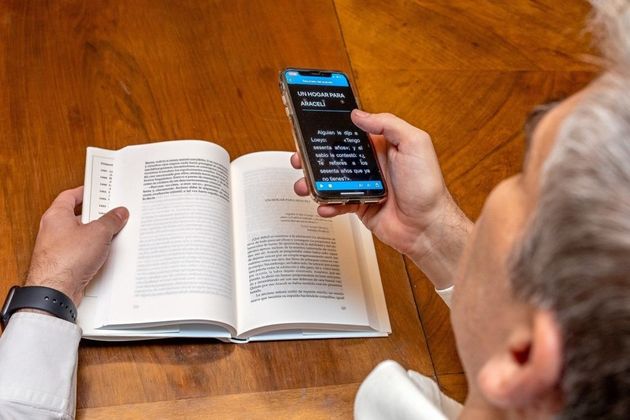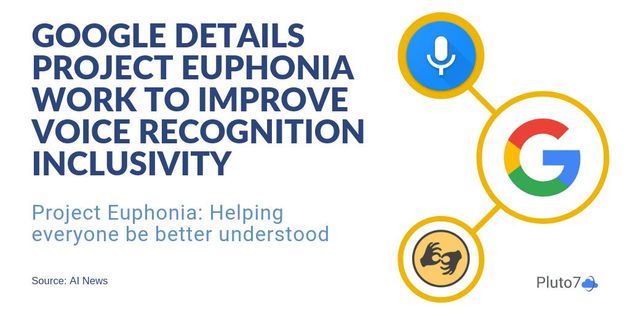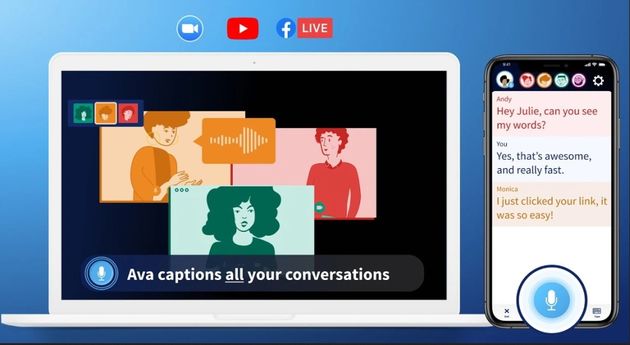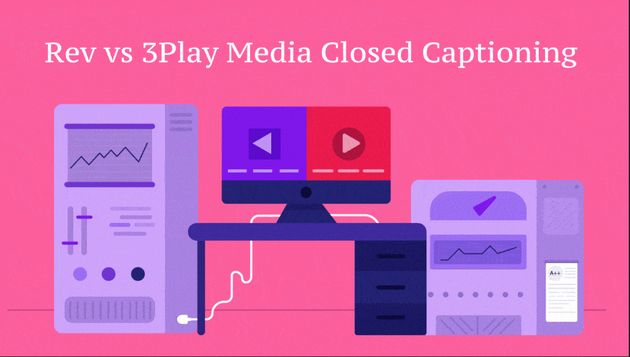Churches can become centres of excellence for the creative use of AI technology to support everyone, including disabled people, both in church and elsewhere.

Something a little more unusual in this blog post as we are going to be exploring how Artificial Intelligence can be a tool that we can use to help and support people, of any age with additional needs or disabilities, in our churches.
A few years ago, the former UN Secretary-General, Ban Ki-moon, said…
“Technology has changed the world, bringing knowledge within reach and expanding a range of opportunities. Persons with disabilities can benefit enormously from such advances, yet too many lack access to these essential tools…”
So, has anything changed since then? And what does today’s Artificial Intelligence, or ‘AI’, offer as technological solutions for disabled people, particularly in our church settings?
What can we learn about ‘AI’ together, that can enable us to better serve and support disabled people in our church communities?
Artificial Intelligence usually refers to smart machines, or algorithms, that are capable of performing complex or cognitive tasks usually or previously carried out by humans.
Now, many of us, when we think about ‘AI’, might have our minds filled with sci-fi images of robots like C3P0 from Star Wars or Data from Star Trek, and humanoid holograms like Rimmer from Red Dwarf, or Data’s virtual colleague, the Emergency Medical Hologram… and who knows what ‘AI’ technologies might be out there in the future… just don’t go and watch the movie ‘Terminator’ after watching this video.
But today we are going to explore some of what is out there right now, and you might be surprised at how ‘futuristic’ some of this technology can be!
And as we explore these technological advances together, we are also going to consider how churches, and disabled members of our congregations, can use these AI advances and developments to enable church to be a more accessible and inclusive place for everyone; a place where everyone belongs.
So buckle up, set your engines to warp 10, and let’s defy the laws of physics and boldy go and see what’s out there…
Many of us use smartphones, some of us might seem to be surgically attached to them.
If that’s you, then you have far more technology in your pocket than Neil Armstrong, Buzz Aldrin and Mike Collins had in the Apollo 11 spacecraft that took them to the moon and back.
And our smartphones are packed with apps and solutions to make the world a more accessible and inclusive place too… so let’s have a look at some of them…
Before we even think about what we can use in church, how about getting to church in the first place… We may not have to plot a return route to the moon, thank goodness, but planning a safe and accessible route to and from church can be just as important for disabled people.
Tools such as Google Maps allow disabled users to plan and prepare their trips in advance, and to visualize their route and the best means of transportation to use according to their profile.
Thanks to the ‘wheelchair accessible‘ option, people using wheelchairs can know where ramps and lifts are located, plus the ‘accessible places‘ feature is useful for them to have more information about the layout of many buildings, as well as parking places, entrance locations, bathroom facilities, seating layouts and much more…
Why not add these “accessible places” features for disabled people to see, in a review of your church on Google Maps?
Software such as Matterport transforms real-life spaces into immersive digital 3D models that can be moved through virtually. The Additional Needs Alliance website has an example and demonstration of this in use at a church in Hitchin.
Imagine if disabled people could take a virtual reality tour through your church building before arriving… well this is now absolutely possible!
For some people, going to a new place can be very stressful. The anxiety linked with an unfamiliar place can become overwhelming and can stop people going.
Having the ability to be able to familiarise yourself with a new place, such as a church building, before visiting it, can be extremely helpful in reducing this anxiety.
A Matterpoint based virtual tour is a simulation of an existing location, usually composed of a sequence of videos or still images.
It may also use other multimedia elements such as sound effects, music, narration, and text, to create an environment that people can explore in advance of visiting.
Seeing AI on Apple or Lookout on Android, for example, helps people who are blind or visually impaired to read documents by placing the document under their smartphone camera.
Think about how this could help members of a church congregation to engage with church news sheets, the Bible, or the order of service.

Tools such as Apple Siri, Google Assistant and Amazon Alexa allow people to use their smart devices to control everything at home, just by using their voice.
Smart devices are becoming more and more commonplace and affordable with new uses emerging all the time. Imagine how this could help people in church to be able to control sound and lighting levels, for example, or to change the heating to a more comfortable setting.
Some people with speech impairments can struggle to use these smart devices, however, so Google’s Project Euphonia is using AI to create speech models for people with non-typical speech patterns, therefore improving the diversity of voices understood by speech assistants, smart devices, and translation services, etc.

[photo_footer] Google’s Project Euphonia. / Additional Needs Blogfather. [/photo_footer]
Ava is a transcription app that uses AI to instantly transcribe the conversation of a group of people. Its algorithm adds punctuation, the name of the person who is talking, and the necessary vocabulary from the user’s dictionary.
In a church context this would be an easy way for deaf people, or people with a hearing impairment, to be included and to follow a conversation with several people without lip-reading, such as at a small group session, a Bible study or a prayer meeting, or at a youth group gathering.

[photo_footer] Ava app. / Additional Needs Blogfather. [/photo_footer]
How about Closed Captions. Over the past couple of years, we have all become Zoom ‘Guru’s’, and have, perhaps, become more used to seeing real-time closed captions being automatically provided as part of meetings as standard.
Captions displayed on the screen, showing what is being said, either live or on pre-recorded content, are great ways to help people who are deaf or have a hearing impairment, as well as people with a wide range of other additional needs, to be included when, for example, someone is preaching, or if a video is being shown.
Zoom can provide automatic captioning of meetings or services, and other tools such as ‘Rev’ or ‘3Play Media’ are available to add captions to videos after recording, for example.
Simply upload your video file and they will add the captions and provide the link for you to download the newly updated file. Sometimes it can be turned around in minutes!

[photo_footer] Rev and 3Play Media. / Additional Needs Blogfather. [/photo_footer]
Training apps can use AI too. There are lots of ways that training apps can help support disabled people… The Braille AI Tutor app from Objective-Ed and Microsoft, for example, is an innovative solution that helps to compensate for the current shortage of Braille trainers.
Thanks to AI-based speech recognition and gamification tools, blind students can learn Braille faster and more independently, helping them to be able to engage with Braille content in any setting, including at church.
The Braille AI Tutor app is part of Microsoft’s commitment to its ‘AI for Accessibility’ project, advocating for people with disabilities and committing to influencing the future of technology to ensure global independence and inclusion in society in four key areas of focus: home, community, education, and employment.

[photo_footer] Braille AI Tutor app . / Additional Needs Blogfather. [/photo_footer]
Some of what they are doing could have real world future benefits for disabled people in church, so watch out for further developments from this project.
Whether it’s how we get to church, knowing our way around when we get there, being able to access the resources used at church and to engage with everything that’s happening, or having the ability to change how information reaches us, to suit us, AI is here to stay and is already making a difference in our churches.
So, is what Ban Ki-moon said a few years ago still true? Are disabled people benefiting from advances in AI? Are some being left behind as they lack access to these valuable tools?
Well, the answer to all of these questions still seems to be, “yes”. There are increasing benefits, but not for everyone, and that’s an area where the church can help to level up the playing field.
If churches skill up in these AI technologies, start to offer them to members of their congregation, are willing to help and train up people in how to use these developments for themselves, then churches can become centres of excellence for the creative use of AI technology to support everyone, including disabled people, both in church and elsewhere.
And if you’re thinking, “OK, so that’s another thing for me to have to learn about and do… where am I going to get the time?” then remember that you don’t have to do it all in one go, and you don’t have to do any of it alone. You might even be doing some of it, like live closed captions on Zoom, already.
Remember to take disabled people in your congregation on the journey with you; ask them to help you to decide what to prioritise; remember that important phrase often used in the disability community “nothing about us without us”, and then reach out to the many of us that are out there who are willing to help and chat things through.
At Urban Saints, we have an additional needs ministry that is committed to helping churches to become more accessible, to be inclusive, and become places of belonging for all, especially for children, young people and young adults with additional needs and disabilities. Why not contact us to see how we can help you…
As Ban Ki-moon said, “Technology has changed the world, bringing knowledge within reach and expanding a range of opportunities…” That change is already here, it’s already within the reach of every church, lets grab it and make the most of what it offers us, bringing those opportunities alive for everyone, including disabled people!
See you ‘out there’!
Mark Arnold, Director of Additional Needs Ministry at Urban Saints. Arnold blogs at The Additional Needs Blogfather. This article was re-published with permission.

Las opiniones vertidas por nuestros colaboradores se realizan a nivel personal, pudiendo coincidir o no con la postura de la dirección de Protestante Digital.